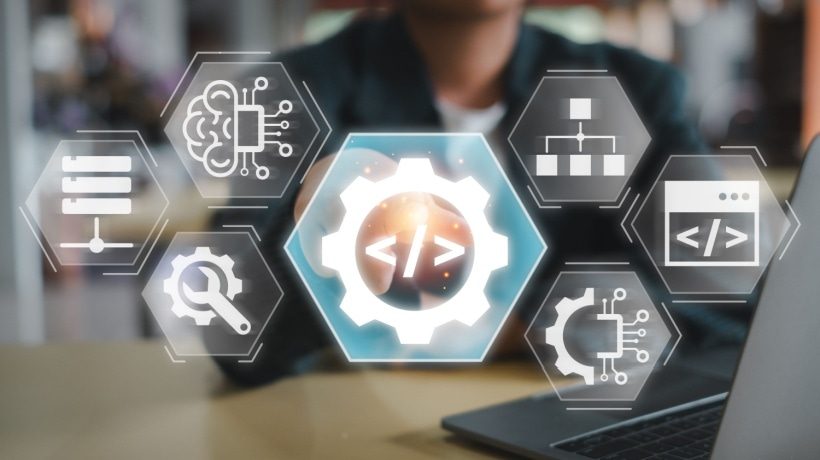No-Code Tools Are Empowering L&D Teams
In today's business world, change is relentless. New technologies, evolving customer expectations, and the constant demand for innovation have created an environment where upskilling is no longer optional; it's essential. Yet, one major obstacle remains: the digital skills gap. Learning and Development (L&D) professionals are on the front lines of this challenge. They must not only design and deliver effective learning experiences but also keep pace with emerging tools and strategies themselves. Enter citizen development for L&D—a game-changing approach that empowers nontechnical professionals to build, customize, and automate solutions without needing deep programming knowledge. This article explores how citizen development can help L&D teams bridge the digital skills gap, become more agile, and support organizational growth in entirely new ways.
Understanding The Digital Skills Gap
The digital skills gap refers to the mismatch between the digital competencies employers need and the current capabilities of the workforce. According to a World Economic Forum report, more than 50% of employees will require significant reskilling. This isn't just about mastering new software; it's about embracing a mindset of continuous digital transformation.
For L&D professionals, this gap presents a double-edged sword. On one hand, they must design training programs that address digital upskilling for all employees. On the other, they must ensure their own team has the skills to implement, measure, and continuously improve these programs using digital tools.
What Is Citizen Development?
Citizen development is the practice of enabling business users—those without formal coding backgrounds—to create or modify applications using low-code or no-code (LC/NC) platforms. These platforms offer visual, drag-and-drop interfaces, prebuilt components, and integrations that make app development accessible to anyone willing to learn.
Traditionally, app development has been the exclusive territory of IT departments. But with citizen development, business teams can create solutions to improve workflows, automate manual tasks, or collect and analyze data without waiting in long IT queues. This democratizes innovation and encourages a culture of experimentation.
Why L&D Professionals Need To Embrace Citizen Development
1. Faster Response To Learning Needs
Traditional training development cycles can be lengthy, involving multiple stakeholders, approvals, and technical bottlenecks. With citizen development, L&D teams can quickly build apps, dashboards, and automated workflows that support new learning initiatives. For example, an L&D team could create a customized onboarding tracker or a microlearning app tailored to specific skillsets—without having to wait for IT resources.
2. Enhanced Personalization
Today's employees expect personalized, on-demand learning experiences similar to the consumer apps they use daily. Citizen development enables L&D professionals to rapidly prototype and deploy tailored learning solutions, adapting content to individual needs, job roles, or performance data. Imagine a scenario where learning modules adapt dynamically based on employee progress or feedback collected in real time—this level of personalization becomes achievable with low-code/no-code tools.
3. Improved Data-Driven Decision-Making
By building their own dashboards and analytics tools, L&D professionals can track learning engagement, measure effectiveness, and gather actionable insights without relying solely on standard LMS reports. This empowers them to make data-backed decisions to optimize programs and demonstrate ROI more convincingly to leadership.
4. Greater Autonomy And Innovation
Citizen development fosters a culture of self-sufficiency and innovation. Instead of being limited by technical constraints or resource shortages, L&D teams can experiment, iterate, and improve their offerings on the go. This autonomy can significantly boost team morale and job satisfaction.
Real-World Applications For L&D
Citizen development can transform various aspects of learning and development. Here are some examples:
- Customized feedback and assessment tools
Build apps to collect instant feedback after training sessions or to create role-specific assessments that help measure skill gains more precisely. - Automated certification workflows
Automate the tracking and issuance of certificates for compliance or skills-based courses, reducing manual workload and errors. - Onboarding and mentoring apps
Design interactive, personalized onboarding journeys or mentorship matching tools to improve new hire integration. - Training request and scheduling systems
Create apps to streamline training nominations, approvals, and scheduling without needing to rely on multiple emails or spreadsheets. - Microlearning content libraries
Develop self-service learning hubs where employees can access bite-sized, job-relevant content whenever they need it.
Upskilling L&D Teams For Citizen Development
While LC/NC platforms make app development more accessible, L&D professionals still need to learn foundational skills to fully leverage these tools. Key areas include:
- Design thinking
Understanding how to empathize with learners, define pain points, ideate solutions, and prototype effectively. - Process mapping
Identifying and visualizing workflows that can be improved or automated. - Data literacy
Interpreting learning data to inform design decisions and measure outcomes. - Basic app logic
Grasping concepts like conditional logic, data connections, and user flows—even if no coding is required.
Many organizations are now including LC/NC training in their L&D strategy to empower their own teams to become citizen developers. This not only future-proofs the function but also aligns it more closely with organizational innovation goals.
Overcoming Challenges
Of course, adopting citizen development in L&D is not without challenges. Some common hurdles include:
- Resistance to change
Shifting from traditional methods to self-built solutions requires a mindset change. Clear communication about the benefits and hands-on demonstrations can help. - Governance and security
It's crucial to establish guardrails to ensure data security and compliance while empowering nontechnical users. - Integration with existing systems
New apps must work seamlessly with existing Learning Management Systems and HR tech stacks. Choosing the right LC/NC platform that offers robust integrations is key.
The Future Of L&D: A Blend Of Learning And Building
In an era where digital agility defines competitive advantage, L&D cannot remain solely as a content delivery function. By embracing citizen development, L&D professionals can move beyond designing courses to designing entire learning ecosystems—tailored, automated, and data-driven. This approach transforms L&D into a strategic partner in business growth, enabling it to address skills gaps faster and support a culture of lifelong learning. Moreover, it positions L&D professionals themselves as role models for digital fluency and innovation.
Conclusion
Bridging the digital skills gap is one of the most critical challenges facing organizations today. L&D teams are uniquely positioned to lead this charge—but they must also upskill themselves to do so effectively. Citizen development offers L&D professionals a powerful way to innovate faster, personalize learning, and measure impact more precisely—all without waiting for IT bottlenecks. By empowering themselves with no-code/low-code tools, L&D leaders can transform their role from content providers to learning experience architects and business enablers. The future of work demands a future-ready L&D function. Citizen development is the bridge to get there.
Final Thoughts
Are you ready to become a citizen developer and transform your L&D strategy? Start small—experiment with a simple workflow or build a custom feedback app. Over time, you'll gain confidence, inspire your team, and ultimately contribute to a more digitally fluent, future-proof organization.






